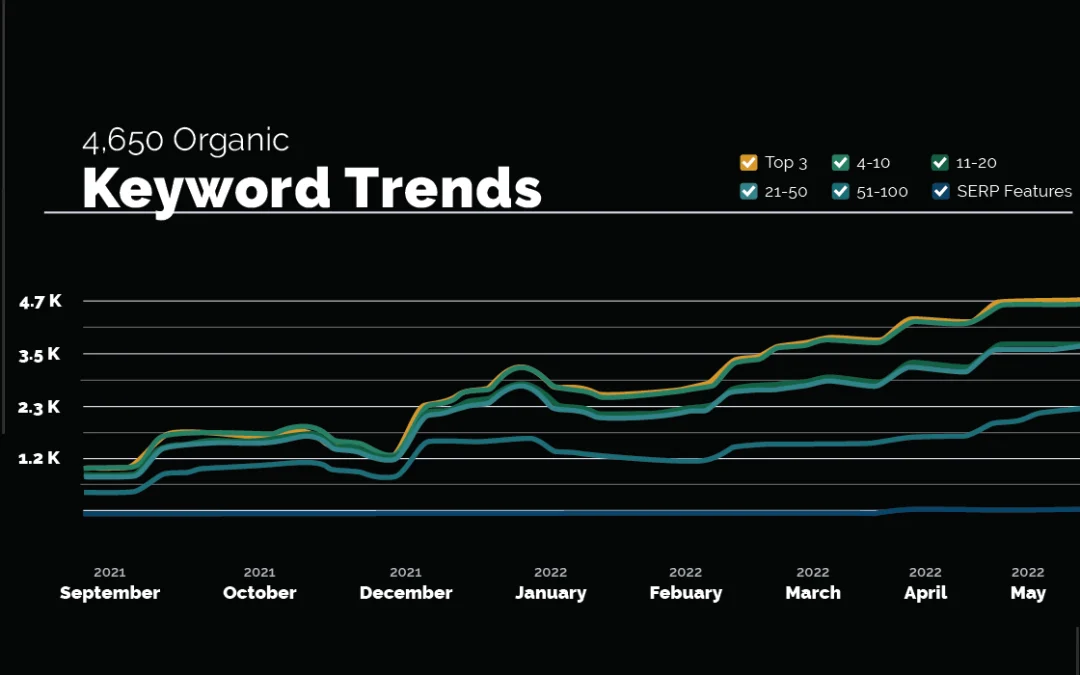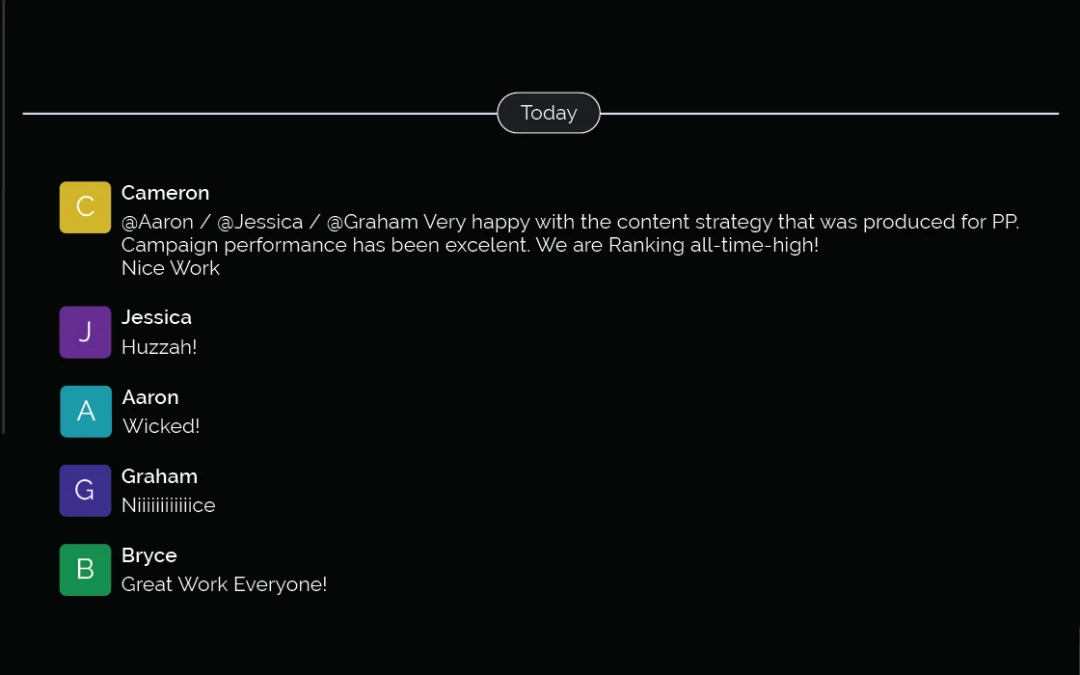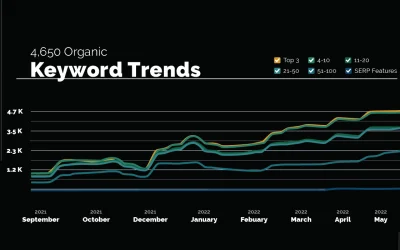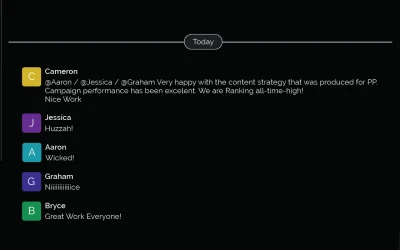Summary
- Your ideal customer is the one who finds substantial value in your offerings, remains loyal, and amplifies your message. Use in-depth market research such as surveys, interviews, focus groups, social listening, website and social media analytics, competitor analysis, and industry research to gather information about your existing customers and potential audience.
- After collecting data, construct comprehensive profiles representing your ideal customers. These personas should cover demographics, psychographics, behaviors, motivations, pain points, information sources, decision-making processes, brand interaction preferences, the customer journey, and potential objections. Multiple personas may be required if your business caters to diverse customers.
- Use the insights from your buyer personas to create messages addressing the unique needs and interests of your customers. Your messages should answer the “why” of your customers, be simple, clear, consistent, and include a clear call-to-action (CTA).
- Select channels based on where your ideal customers consume content. Possible channels include social media, content marketing, email marketing, and paid advertising. It’s often best to use a multi-channel approach, ensuring a strong presence on different key platforms.
- Continual testing and refinement of your marketing strategies are critical. Set clear, measurable goals to track performance. Professional agencies like Monochrome Marketing can offer expert guidance for your marketing needs that keeps your campaigns efficient and on-track.
Understanding your target audience is absolutely vital to the success of your small business. You can’t create content, run ads, or even build a conversion-centric website without knowing who you’re trying to reach—so before you start promoting your business, you need a clear vision of who your ideal customers are.
At Monochrome Marketing, we’ve seen repeatedly that customer-centric strategies create the most success for the businesses who partner with us. That journey begins by identifying and understanding your ideal customer. Here’s how you do it.

Who Is Your Ideal Customer & How Do You Find Them?
Your ideal customer is not just anyone who walks through your door or visits your website. They’re a very specific archetype: the customer who finds real, substantial value in what you offer, stays loyal to your brand, and amplifies your message by sharing their positive experiences with others. But how do you find them amidst the noise and competition—and more importantly, how do you reach out to them once you’ve found them?
Research is the key to finding your ideal customer, but there’s a ton of information out there—and most small businesses don’t have a clear understanding of what data to look at. Let’s break down what you should be focusing on.
How to Conduct Market Research that Actually Tells You Something
Market research is your torchlight in the dark, illuminating the path to your ideal customers. Start by collecting demographic data—like age, location, and income—and psychographic information—like interests, attitudes, and behaviors—about your existing customers.
To conduct market research that will help you identify your ideal customers, try the following:
- Use Surveys: Develop online surveys with specific questions about your customers’ habits, preferences, and needs. Free tools like Google Forms or SurveyMonkey can be a great place to start. Distribute these surveys through email, social media, or even directly on your website.
- Interview Customers: One-on-one conversations can provide a wealth of information. These could be in-person, over the phone, or via video chat. Provide an incentive for customers on your mailing list to schedule interviews with you, then ask open-ended questions that encourage them to share their experiences and preferences.
- Host Focus Groups: Bring together a small group of customers and lead a discussion around your product or service. You can also do this virtually using platforms like Zoom or Google Hangouts.
- Try Social Listening: Keep an eye on what customers are saying about your brand on social media. Free tools like TweetDeck for Twitter, or paid ones like Sprout Social and Hootsuite can help you monitor mentions of your brand, competitors, and relevant keywords.
- Conduct Website and Social Media Analytics: Utilize analytical tools to understand your online audience better. For your website, Google Analytics can provide data about your visitors’ demographics, behavior, and more. On social media, platforms like Facebook and Instagram offer built-in analytics that can give you detailed insights about your followers.
- Analyze Your Competition: Look at what your competitors are doing. Who are they targeting? What marketing strategies are they using? Tools like SEMRush or Ahrefs can help you understand their SEO strategies, whereas Buzzsumo can provide insights into their content marketing efforts.
- Customer Reviews and Feedback: Don’t overlook the feedback you already have. Online reviews, testimonials, and even customer complaints can provide valuable insights into what your customers need and value.
- Industry Research: Look for existing research about your industry. Government databases, industry associations, and research companies often provide statistics and reports that can help you understand the broader market landscape.
Remember that your aim is to understand your customers’ demographics, behaviors, needs, and motivations. This information will be vital when you’re developing your buyer personas and marketing strategies. It might be time-consuming, but the more information you have, the better you’ll be able to target your marketing efforts effectively.

Building Better Buyer Personas
Once you’ve collected data, the next step is to create buyer personas, which are detailed profiles that represent your ideal customers. These personas are more than just data points; they are real, breathing representations of your target audience. A comprehensive buyer persona should include:
- Demographics: Age, gender, income, education level, location, occupation, and family status.
- Psychographics: Interests, hobbies, values, attitudes, and lifestyle.
- Behaviors: Preferred social media platforms, favorite websites, shopping habits, and brand interactions.
- Motivations: Goals, dreams, and what drives them to make decisions.
- Pain Points: Challenges, problems, or issues they face that your product or service can solve.
- Information Sources: Where they get their information from, such as specific websites, magazines, blogs, or influencers.
- Decision-making Process: How they typically make purchasing decisions, what factors influence their choices, and who else might be involved in the decision.
- Brand Interaction Preferences: How they prefer to interact with brands (e.g., email, social media, phone calls) and what kind of content they prefer (e.g., blogs, videos, podcasts).
- Customer Journey: The steps they take from discovering your brand to making a purchase and beyond.
- Objections: Common reasons they might choose not to purchase your product or service.
Remember, your buyer personas should be realistic and based on real data, even though they are fictional characters. The more detailed and accurate they are, the better they’ll serve as a guide for your marketing strategies.
Your business might also have more than one type of ideal customer, so don’t be afraid to create multiple buyer personas. These personas will serve as your north stars, guiding your marketing strategies and helping to ensure your message hits home.

Reaching Your Ideal Customer Once You’ve Found Them
Understanding your target audience is one thing, but communicating effectively with them is another challenge entirely.
Personalized & Targeted Marketing
The secret sauce for successful communication is personalization. Your audience is much more likely to engage with your brand if they feel seen and understood. Use the insights from your buyer personas to craft messages that resonate on a personal level, addressing their unique needs and interests.
For example, if you’re communicating with a persona who is cost-sensitive, emphasize the value for money that your product or service offers. If another persona values convenience, highlight how your business makes their life easier.
How to Craft Compelling Messages
Crafting compelling marketing messages is an art. The key is to not just broadcast what you offer, but to communicate the “why”—why should your customers care? What difference will it make in their lives? Answering these questions will help you form a connection with your customers, moving beyond transactional relationships to build lasting loyalty.
Keep your messages simple, clear, and consistent across all your channels. Use language that your audience uses and can relate to. And don’t forget to include a clear call-to-action (CTA), whether it’s to visit your website, sign up for a newsletter, or make a purchase.
Matching the Medium to the Message: Marketing Channels Explained
Now that you’ve defined your audience (the “who”) and messages (the “what” and the “why”), it’s time to select the channels you’ll use to reach them (the “when”, “where”, and “how”).
Find the Marketing Channels Your Audience Is Already Using
Not all marketing channels perform equally for every brand. The most effective channel for your business will depend on where your ideal customers are and how they like to consume content.
Is your target audience primarily using Facebook, or are they more active on LinkedIn or Instagram? Do they appreciate lengthy, informative blog posts, or do they prefer bite-sized email newsletters? Your market research and buyer personas should help you answer these questions.
Social Media, Content Marketing, Email, & Paid Advertising
Social media platforms offer a way to engage directly with your audience, share valuable content, and build your brand’s personality. Content marketing—like blog posts or ebooks—positions your business as an expert, providing value to your audience while improving your SEO and helping you build topical authority to improve your search engine rankings.
Email marketing allows for direct, personalized communication and high levels of segmentation, while paid advertising—like Google Ads or Meta Ads—helps boost visibility and reach new audiences.
Each channel has its own strengths, and a multi-channel marketing approach will likely be the most effective strategy. However, it’s crucial to prioritize quality over quantity. It’s better to have a strong presence on a few channels where your audience is active than to spread yourself too thin across too many platforms.
Testing, Analyzing, & Refining
As with all marketing strategies, it’s crucial to test, analyze, and refine your approach continuously.
The Need for Continuous Testing & Analysis
Digital marketing is not a set-it-and-forget-it process. It requires constant testing and tweaking to ensure maximum effectiveness. Run A/B tests on your email subject lines, ad copy, or even the color of your CTA buttons on your website. Test different posting times on social media or different types of content to see what resonates most with your audience.
Measuring Campaign Effectiveness
To measure the effectiveness of your campaigns, establish clear, measurable goals at the outset. These could be increasing website traffic, boosting sales, or improving customer retention rates. Then, use tools like Google Analytics or social media metrics to track your performance.
See Also: How to Measure the Success of Your Digital Marketing Campaigns
Remember, the most important metric is not likes or shares, but how well your efforts help achieve your business objectives.
Your Secret Weapon: Professional Expertise & Support
Understanding your audience is crucial to your marketing success. By conducting thorough market research, developing detailed buyer personas, crafting personalized messages, selecting the right marketing channels, and continually testing and refining your strategies, you can connect with your audience on a deeper level and build lasting relationships.
Just remember that even the best strategies require time, effort, and expertise to implement effectively—and it can feel like a lot if you’ve never done it for yourself before. Our team at Monochrome Marketing is here to assist you every step of the way, offering expert guidance that keeps your marketing focused and cost-effective. Don’t hesitate to reach out to us and learn how we can help you reach the audience that’s already out there waiting for your business.









